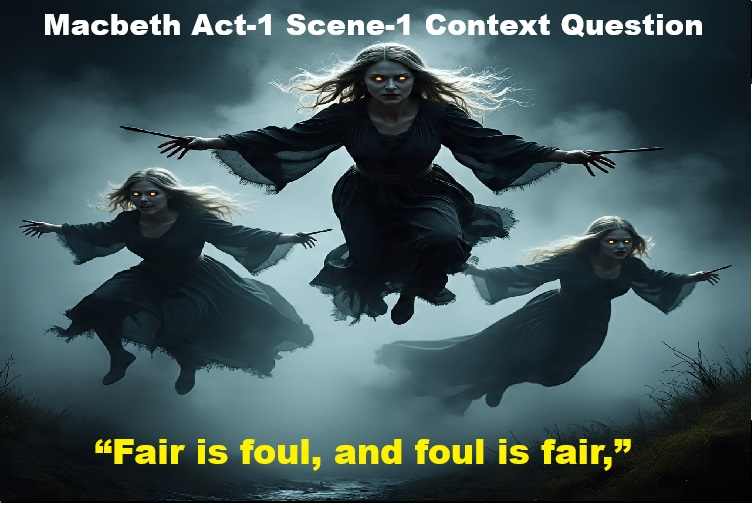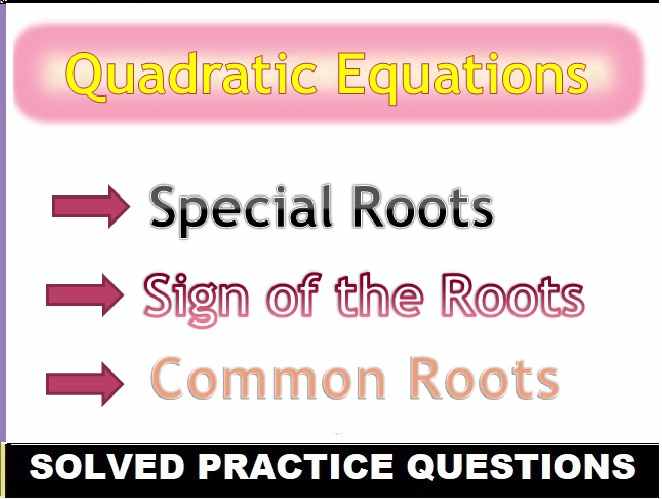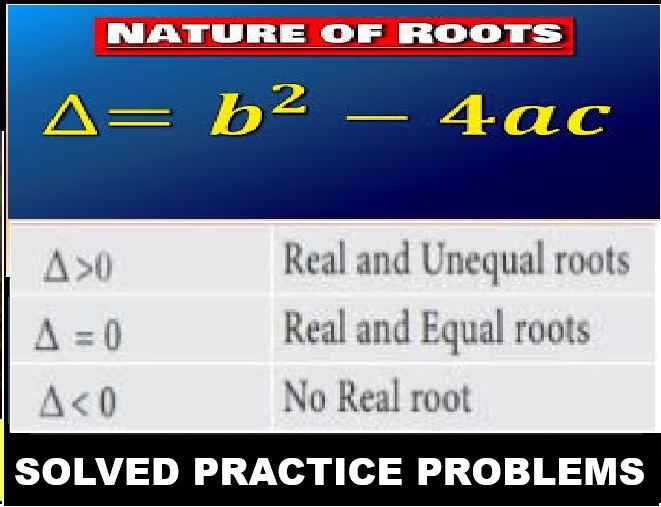Macbeth Act-1 Scene-1 Context Questions: ISC Class 11 Workbook Solutions of Eng Drama. Context Questions are very common in English Drama because it help in the evaluation of skill among students . Visit official website CISCE for detail information about ISC Board Class-11 English.

Macbeth Act-1 Scene-1 Context Questions: ISC Class 11 Workbook Solutions of Eng Drama
| Board | ISC |
| Subject | English |
| Class | 11 |
| Book Name | Macbeth |
| Session | 2025-26 |
| Topics | Workbook Solutions of Act-1, Scene-1 |
| Question Type | Context Questions |
Context Questions
Macbeth Act-1 Scene-1 Context Questions: ISC Class 11 Workbook Solutions of Eng Drama
Que: Read the extract given below and answer the questions that follow
ALL: Fair is foul, and foul is fair: Hover through the fog and filthy air
Que-1: Where are the speakers? Who are they?
Ans: The speakers are in an open field They are the three witches.
Que-2: Name the animals mentioned in the scene.
Ans: The animals mentioned in the scene are a cat and a toad.
Que-3: Explain the lines: Fair is foul, and foul is fair Hover through the fog and filthy air
Ans: the witches spoke these lines in the play, and they set the tone for the paradoxical and chaotic events that follow in the story. “Fair is foul, and foul is fair” suggests that appearances can be trickly, what appear to be good can be bad, and vice versa. This theme of the reversal of moral values is central to the play. The second line, “Hover through the fog and filthy air,” suggests the witches’ association with dark, murky, and unclean places, showing their evil nature.
Que-4: Where do they plan to meet and whom? Who calls them?
Ans: These three witches plan to meet on the heath after the battle is ended. They plan to meet Macbeth, as indicated by the line “There to meet with Macbeth.” It is the third witch who calls them to meet Macbeth.
Que-5: What is the significance of this scene and what does it foretell?
Ans: The significance of this scene as an introduction to the play’s themes of trick, disorder, and the reversal of natural order. The witches’ meeting sets the tone for the rest of the play, suggesting that the events to follow will not adhere to the natural order of things. The witches’ plan to meet Macbeth after the battle gives foreshadows the central role they will play in his life, influencing his decisions and actions, and ultimately leading to Macbeth decline.
First witch: I come Graymalkin. Second witch: Paddock calls. Third witch: Anon.
Que-1: Where are the witches?
Ans: The witches are on the heath, an open field.
Que-2: What is the first question asked by the first witch?
Ans: The first question asked by the first witch, “When shall we three meet again? In thunder, lightning, or in rain?”
Que-3: Write in your own words the meaning and significance of the answer given by the second witch.
Ans: The second witch responds to the first witch’s question by saying, “Paddock calls.” This means that her familiar, a toad named Paddock, is summoning her. The significance of this line is that it shows the witches’ connection to the superpower and their animal familiars, which are often associated with witchcraft.
Que-4: On what note does the scene end?
Ans: The scene ends with the witches sing their paradoxical mantra, “Fair is foul, and foul is fair,” and planning to fly away through the fog and filthy air. These line showing fade, fraud, and disorder in remaining drama.
Que-5: Who are Graymalkin and Paddock?
Ans: Graymalkin is a cat, the familiar of the first witch, while Paddock is a toad, the familiar of the second witch. These familiars are spirits in animal form that serve the witches
— End of Macbeth Act-1 Scene-1 Context Questions: ISC Class 11 Workbook Solutions :–
Return to :– Macbeth ISC Class -12 Drama Workbook Solutions :–
thanks
Please share with your friends if helpful


